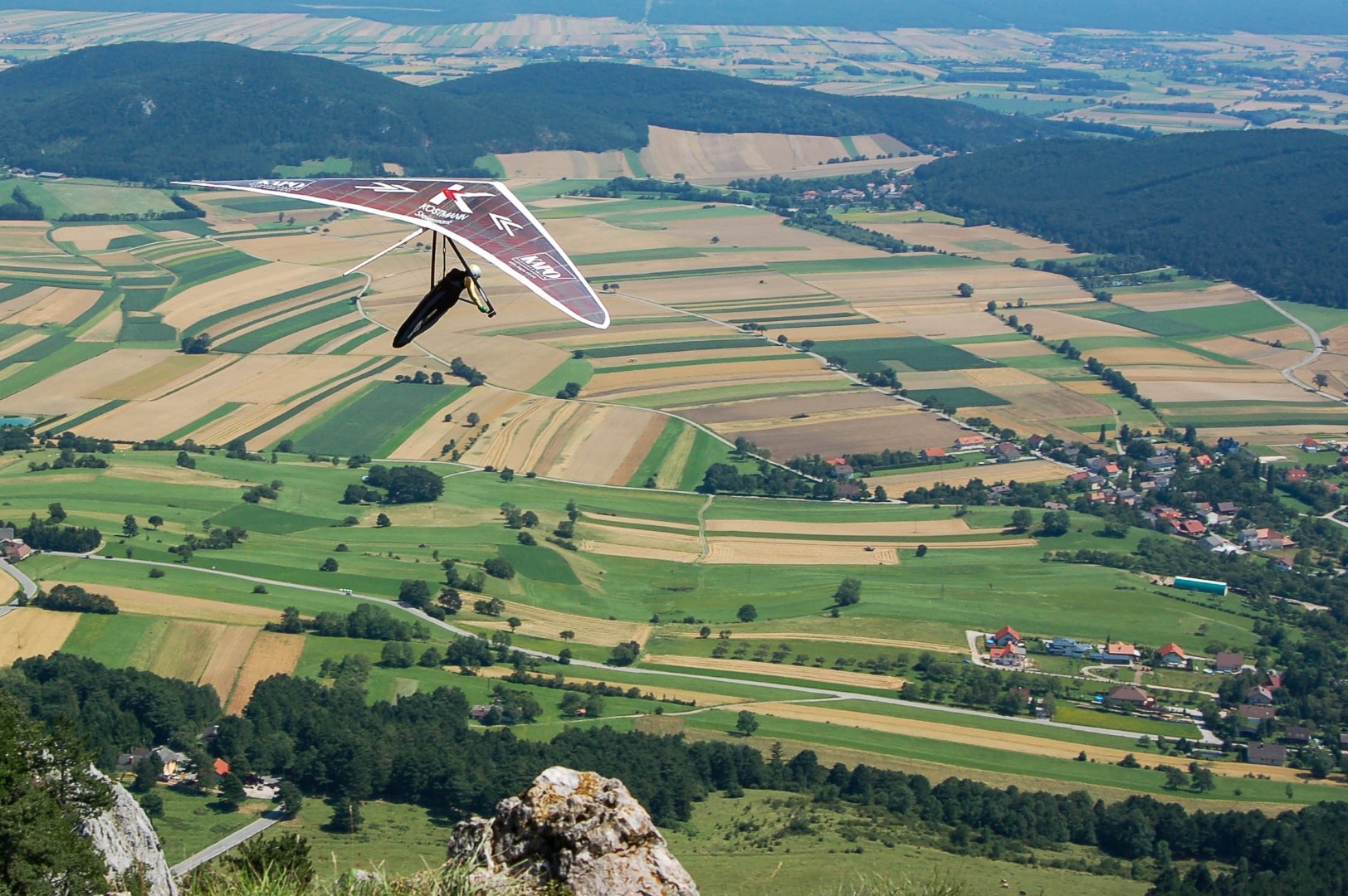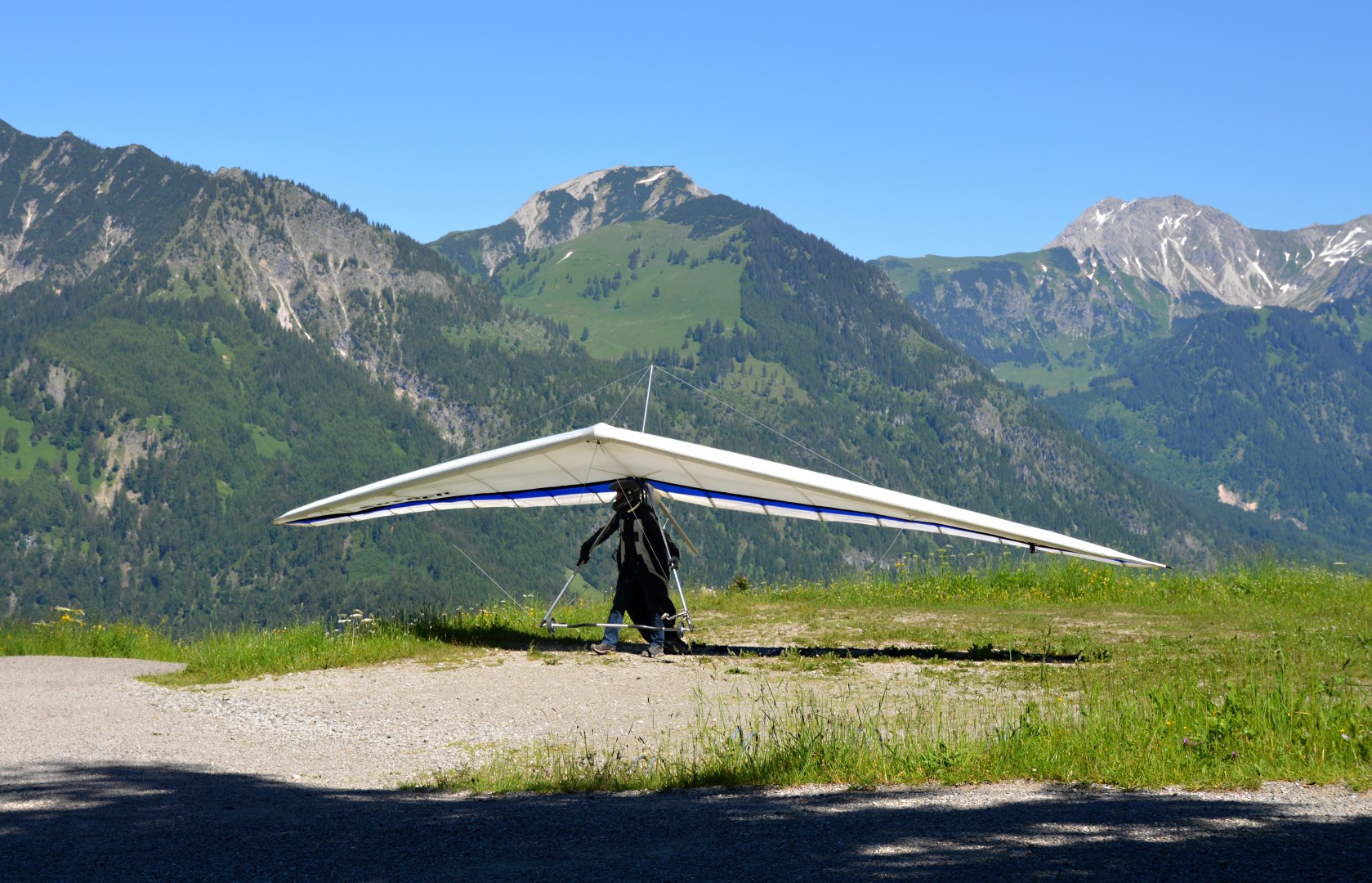
Aircraft are divided into two categories: airplanes and balloons. The substantial difference is that the former are heavier than air, the latter lighter.
The hang gliding falls in the first category and is the only airborne to control pendular, that is that it is piloted through the single displacement of weight of the pilot.
In the initial design of its inventor Francis Melvin Rogallo, the shape was square with the diagonal in the direction of motion and an arrow angle of 45°, but later the shape became more or less that of a right isosceles triangle. Thanks to this development, it took the name of hang gliding, as it represents exactly a delta wing.
The hang gliding has been and continues to be one of the very few instruments that has opened the way to many enthusiasts without the need to resort to huge investments to enjoy the pleasures of flying, thanks to the low costs of purchase, use and maintenance.
The structure is formed by pipes, cables, canvas and bolts suitably studied and able to guarantee high reliability in certain weather conditions.
In terms of pennies a hang glider is a pair of semials held open and horizontal by two braces, one upper and one lower.

The main structural characteristic of hang gliding is the spraying, that is the difference between the inclination of the wingspan in the central section compared to the wingspan of the extremities and is of great importance in ensuring flight stability.
The second peculiarity is the tunnel, that is the crowning that is formed during the flight, when the sail remains retained by the wings and the keel in the central part.
The tubes are made of light aluminium alloys, an excellent material to be subjected to traction and compression almost exclusively along the main axis.
The cables are made of braided steel, able to withstand tensile stress varying between 400 and 600 kg and often covered with transparent plastic material to allow easy visual inspection.
The sail is made of synthetic fabric, which must guarantee and combine characteristics of strength and lightness to a low deformability, being subjected to continuous traction during the flight.
Ultimately, bolting represents the most oversized part of the whole structure and the least inclined to represent a limit of resistance for the entire structure.
The harness has the function to allow the pilot a safe hooking to the hang glider, to guarantee the possibility to perform the necessary maneuvers and a comfortable and safe position from the cold during extended flights.
The first models had a child seat, but considerations of handling and aerodynamics made them discard, in favour of those in which the pilot stretches prone.
As mentioned above, hang gliding is a pendulum controlled aerodynamic whose main characteristic is to shift the centre of gravity of the entire structure to allow longitudinal and directional control. The pilot, in fact, is hanging from the centre of gravity of the hang glider during the flight and is free to swing. Acting therefore on the control bar, it will vary the relative position in order to carry out the following maneuvers:
- Uplift, or increase in altitude by reducing its weight in relation to the centre of gravity.
- Beating, or lowering altitude, with an increase in its weight in relation to the centre of gravity.
- Turn left, moving your weight to the left.
- Turn right, moving your weight to the right.
Now that you know the origin, you are ready to find out Where to experience the thrill of a hang gliding flight